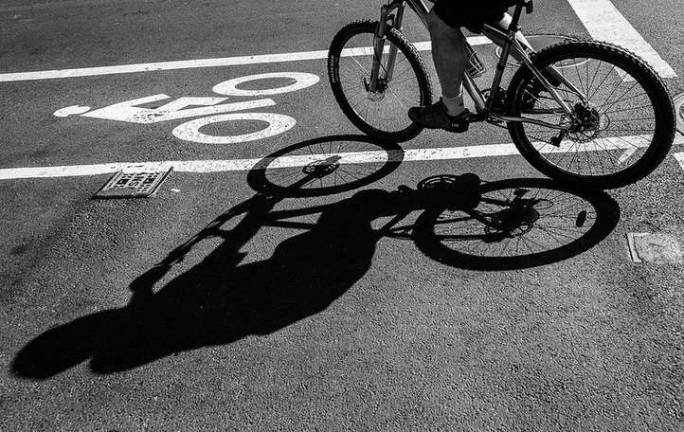Counting bikes on the East Side News

Just how out of control are dangerous bicycles on the Upper East Side?
Not as much as you might think.
In one of the first attempts to quantify the bike safety problem in the neighborhood -- a topic that has gained extra urgency with the recent roll-out of CitiBike -- the E. 79th Street Neighborhood Association this summer launched its own survey of bike traffic on First Avenue and 79th Street.
Volunteers from the group, led by Betty Cooper Wallerstein, tracked bicyclists for nearly 12 hours on June 30, tallying how many bikes passed by the intersection, whether they were using the bike lane, and whether they obeyed traffic lights and went with the flow of traffic.
The results: 1,218 bicylists were counted by the volunteers over those 12 hours. Of those, 821 -- or about two-thirds of the riders -- traveled in the bike lane.
The group counted 277 riders who didn’t ride in the lane, 120 who were going the wrong way, and 178 who went through a red light.
While the findings aren’t likely to reassure Upper East Siders concerned about the dangers posed by bikes, Wallerstein said she’s somewhat reassured by the results.
“I was surprised,” she said. “I was expecting everyone to be going through the light. I was pleased to see some positive improvement.”
According to the group’s numbers, bike ridership at the intersection peaked in the evening, between 6 p.m. and 7 p.m., most likely as a result of food delivery bikes. In that hour, there were 137 bikes in the intersection, 47 of which were not in the bike lane. The most dangerous hour tracked by the group was between 8 p.m. and 9 p.m., when there were 101 bikes on the road, 92 of which were not in the lane.
Councilmember Ben Kallos, who represents the Upper East Side, also has tracked improvement on the issue, thanks to a summer of work to address what he sees as one of the most pressing issues in his district.
Kallos said a renewed focus from officers in the 19th Precinct has resulted in a 52% increase in enforcement actions against bikes and a corresponding 18% drop in bike and vehicle collisions.
Working with his office, the Department of Transportation has given away 10,500 bells and 10,100 lights to bikers.
“This is something we’ve taken very seriously,” Kallos said in an interview. “A lot of this revolves around residents feeling empowered to do something.”
Yet while numbers from police and the new survey show improvement on the issue, it has yet to filter down to how people feel in the street. The September meeting of Wallerstein’s group, for instance, was dominated by the issue, with a number of speakers expressing frustration that bikers who break traffic laws or ride the wrong way seem rarely get punished.
Wallerstein said the emotion surrounding the issue springs from fear, particularly among older New Yorkers, few of whom are riding the bikes that are now crowding the streets.
“It’s very, very frightening,” she said. “The biker knows he can easily get around. But elderly people can’t do that.”
Wallerstein said her group is planning another bike survey in the neighborhood next month.
Kallos welcomed the input. “Unless the community steps up to the plate,” he said, “there will never be an end in sight.”